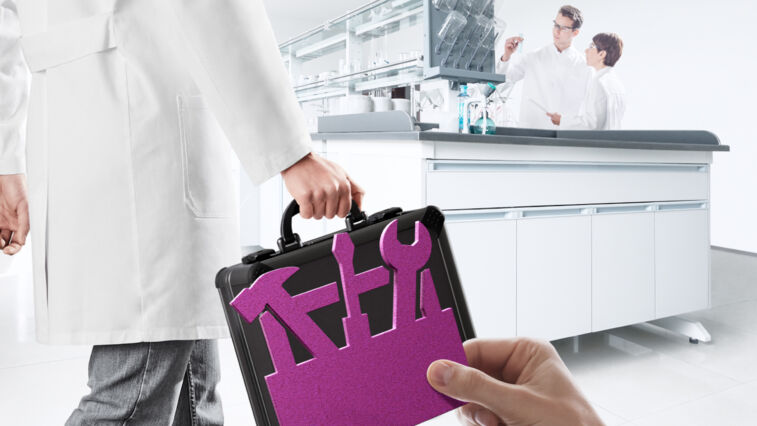

Improved quality
Paper, textile and water
Methacrylates offer various advantages for a host of paper, water, textile and non-woven applications. The products have a broad Tg and property range.
Fibers and Textiles
The application of poly-MADAME and its salts, together with suitable copolymers to cellulose fibers, improves the dyeability of the latter. For acrylonitrile fibers, the same effect is achieved by applying VISIOMER® DMAPMA and other amino methacrylates. These can either be used directly as comonomers in the production of these fibers or are subsequently grafted onto the fiber.
Flocculation aids for water and wastewater treatment
The increasing scarcity of high-quality drinking water combined with rapid population growth in urban areas is a cause for concern and underlines the need for sustainable water management methods.
In wastewater treatment and sludge dewatering, high molecular weight polyelectrolytes are used alone or in combination with inorganic coagulants. The charge intensity of the polyelectrolyte can be individually adjusted by the amount of quaternized monomers incorporated into the polymer. They are active in a wider pH range than inorganic coagulants and produce smaller amounts of a more concentrated, fast-settling and shear-stable precipitate.
Cationic, non-ionic and anionic copolymers are also used. Cationic polymers are generally made from acrylamide and cationic methacrylate monomers, such as VISIOMER® TMAEMC and VISIOMER® MAPTAC. These products can be customized by changing the amount of quaternized monomers incorporated into the polymer.
Paper Coatings
Coating is an important lever for improving paper quality. Key properties, such as print quality, surface protection and increased resistance can all be improved with specific coatings. Here, binders based on acrylic emulsions are commonly used. For more detailed informationn about emulsion, please also refer to the emulsion section.
Retention agents
Acrylamide copolymers containing amino methacrylates, such as VISIOMER® MADAME and VISIOMER® DMAPMA, are suitable as retention agents in papermaking. Consisting predominantly of cationic polyelectrolytes, they improve retention in the draining of pulp during the paper making process. Their efficiency can be tuned across a wide spectrum via the molecular weight and content of amino groups. In (weakly acid) pulp suspensions, such polymers are present as cationic polyelectrolytes. Besides their role as retention agents, they ensure rapid suspension dewatering. The copolymers of our quaternized amino methacrylate monomers VISIOMER® TMAEMC and VISIOMER® MAPTAC act as retention and dewatering agents as well. In their capacity as ‘genuine’ polyelectrolytes, they perform these duties in the acid as well as in neutral range.
Sizing agents
Sizes are primarily used to make the paper more resistant to water and other liquids, and to control ink spread. Additional benefits are increased dry strength, less dusting, improved surface strength and enhanced smoothness. Cationic polymers used as surface sizes are often based on styrene acrylic emulsions. Amino-functionalized methacrylates such as VISIOMER® DMAPMA, VISIOMER® MADAME, VISIOMER® TMAEMC and VISIOMER® MAPTAC deliver key added value in these applications.
Water and Oil Repellent Agents
The newest generation of water and oil-repellent agents is based on fluorochemicals. These products are typically manufactured by emulsion polymerization using 30-60% perfluoroalkyl ethyl methacrylates and 30-50% long side-chain methacrylates. Long side-chain methacrylates, such as VISIOMER® C13-MA and VISIOMER® C17.4-MA, improve water resistance while reducing the dosage of the more expensive perfluoroalkyl ethyl methacrylates.




